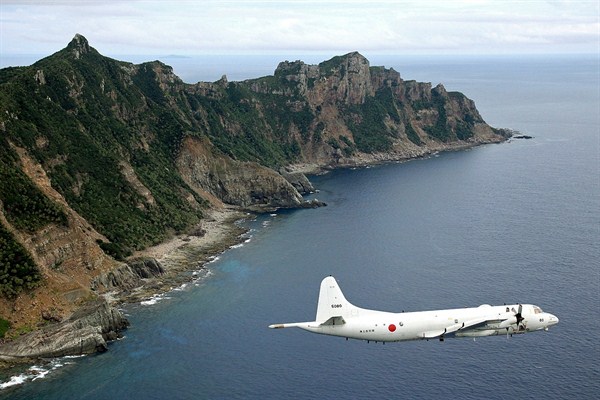After meeting briefly on the sidelines of the APEC summit in Lima, Peru, last month, Chinese President Xi Jinping and Japanese Prime Minister Shinzo Abe acknowledged the need for improved ties. Despite the diplomatic gesture, though, relations remain strained. Next year marks the 45th anniversary of the normalization of diplomatic relations between Japan and the People’s Republic of China, but celebrants of that auspicious occasion may unfortunately find little reason to cheer.
The most immediate source of tension stems from a deepening confrontation in recent months over the Senkaku Islands in the East China Sea, which China claims as the Diaoyu. In October, China denounced Japanese fighter aircraft for carrying out “dangerous tactics” in responding to Chinese surveillance aircraft operating near the disputed islands. A month earlier, Japan protested the presence of about 300 vessels and the incursion of two Chinese coast guard ships in the islands’ territorial waters.
The problems lie deeper, however. Although Sino-Japanese relations have a long history of antagonism, their competition for influence in Asia has in recent years expanded in the economic, diplomatic and security domains. Economically, China and Japan compete regularly for large investment projects and trade deals. Japan earlier this year won a $2 billion deal to build a rail line in the Philippines, for example, while China signed a $5.5 billion deal to build a railway in Indonesia. In 2014, China set up the Asia Infrastructure Investment Bank, or AIIB, a rival to the U.S.- and Japanese-led Asian Development Bank, in order to address Asia’s $8 trillion gap in infrastructure needs. Both countries have offered competing regional trade agreements as well.

